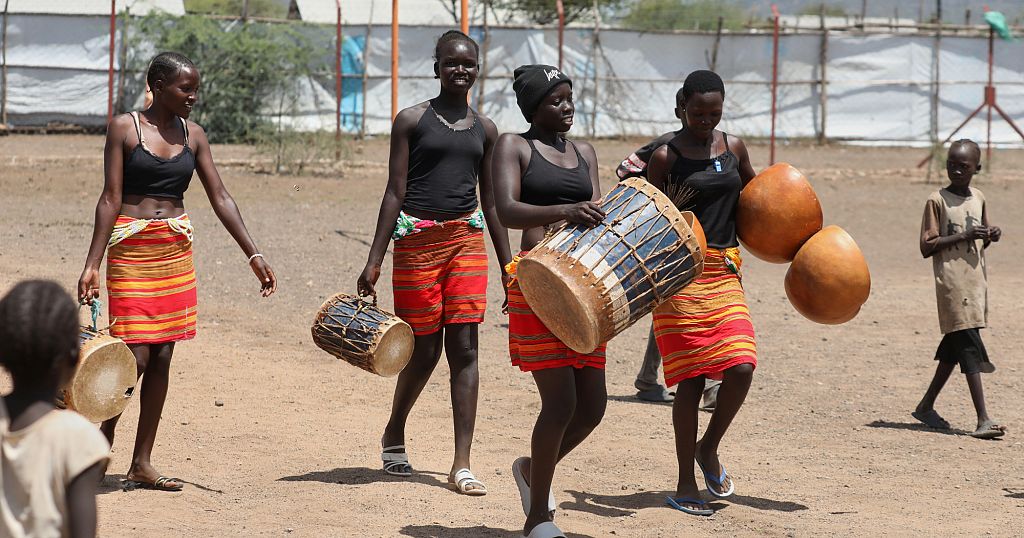Hope in Motion: Refugee Children in Kenya’s Kakuma Camp Find Solace in Dance
In the scorching desert of northern Kenya, a beacon of hope shines bright in the form of traditional and modern dances, performed by young refugee children at the Kakuma camp. This camp, home to over 300,000 people who have fled conflict in dozens of East African countries, has become a symbol of resilience and determination. Despite the harsh conditions and uncertain future, the children have found a way to stay occupied and focused, thanks to the power of dance.
The Acholi traditional dance, in particular, has become a source of comfort and distraction from the hunger and hardship that many of these children face. With monthly food rations halved due to funding cuts, the children have had to rely on their creativity and resourcefulness to survive. The dance has become a vital part of their daily routine, allowing them to express themselves and connect with their cultural heritage. As John Wani, a Social Worker at Terre Des Hommes, notes, "We have to keep the culture alive because of the moral values they learn from it and the message of peace it conveys."
For 20-year-old Gladis Amwony, who has lived in Kakuma for 8 years, the traditional dance has become a way to keep her Ugandan roots alive. Despite having no recollection of life in her home village, Gladis finds solace in the dance, saying, "I like the traditional dance because when I was home, I liked the traditional dances." Her story is a testament to the human spirit’s ability to adapt and thrive in the face of adversity.
However, the future of these dance programs and the children who participate in them hangs in the balance. Funding cuts have affected operations at the camp, with fewer staff and resources available to engage the children and ensure their safety. The centre in neighboring Kalobeyei Village 3, which once featured daily programs such as taekwondo and ballet, may not be operational in a few months if the funding landscape remains unchanged. As John Papa, a Community Officer at Terre Des Hommes, notes, "We are reducing some of the activities because we are few… it is really hard for us to conduct 500 children."
The impact of these programs extends far beyond entertainment; they provide a safe haven for children to learn, grow, and develop essential life skills. They also help to keep children away from child labor, abuse, and crime, giving them a chance to build a better future. As the children dance and play beneath the sweltering sun, their hope and resilience are a powerful reminder of the human spirit’s capacity to overcome even the most daunting challenges. The question remains: will these child-friendly spaces be able to continue providing a sense of hope and normalcy for these young refugees, or will funding cuts silence the music and still the dance? Only time will tell.





